
Pandemis heparana, the dark fruit-tree tortrix or apple brown tortrix, is a moth of the family Tortricidae.

Dichrorampha acuminatana is a moth of the family Tortricidae. It is found in Europe and the Near East.
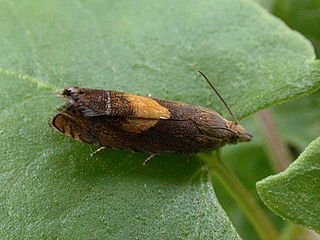
Dichrorampha petiverella is a moth of the family Tortricidae. It is found in the Palearctic realm.
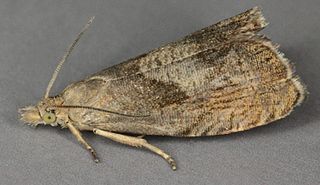
Dichrorampha simpliciana is a moth of the family Tortricidae. It is found in Europe and the Near East.
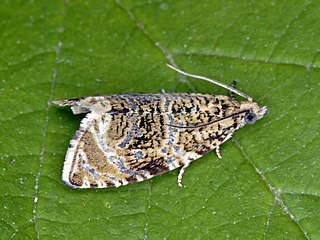
Syricoris lacunana, the dark strawberry tortrix, is a small moth species of the family Tortricidae. It is found in the Palearctic realm.

Celypha striana is a moth of the family Tortricidae. It is the type species of its genus Celypha.

Archips rosana, the rose tortrix, is a moth of the family Tortricidae. It is found in both the Palearctic and Nearctic realms.

Dichrorampha sedatana is a moth of the family Tortricidae.

Dichrorampha is a genus of moths belonging to the subfamily Olethreutinae of the family Tortricidae.

Gillmeria pallidactyla is a moth of the family Pterophoridae first described by the English entomologist, Adrian Hardy Haworth in 1811. It has a Holarctic distribution and is widespread throughout North America and the Palearctic.

Epinotia nisella is a moth of the family Tortricidae which is found in the Palearctic, Europe and North America. It was first described by Carl Alexander Clerck in 1759.

Epinotia tetraquetrana, the square-barred bell, is a moth of the family Tortricidae. It is found from most of Europe east to the Near East and the eastern part of the Palearctic realm.

Epinotia trigonella, the birch epinotia moth, is a species of moth of the family Tortricidae. It is found in most of Europe, east to the eastern Palearctic realm. It is also found in North America.

Dichrorampha alpinana, the broad-blotch drill, is a species of moth of the family Tortricidae. It is found in almost all of Europe.

Thiodia citrana, the lemon bell, is a species of moth of the family Tortricidae. It is found in China, Japan, Iran, Asia Minor, Turkmenistan, Russia, Kazakhstan, North Africa and Europe. The habitat consists of rough grasslands and dry pastures.
Dichrorampha rilana is a species of moth of the family Tortricidae. It is found in Albania and Bulgaria, where it has been recorded from the Vitosha, Rila and Pirin mountains. The habitat consists of subalpine herbaceous formations on siliceous soils.
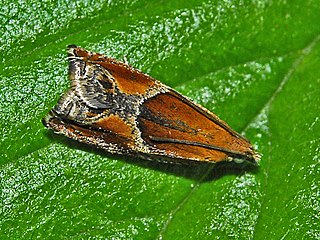
Ancylis obtusana, the small buckthorn roller, is a moth of the family Tortricidae.

Dichrorampha aeratana is a moth belonging to the family Tortricidae. The species was first described by Pierce and Metcalfe in 1915.

Dichrorampha consortana is a moth belonging to the family Tortricidae. The species was first described by James Francis Stephens in 1852.
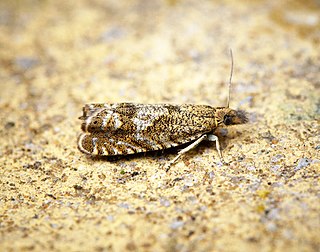
Dichrorampha plumbagana is a moth belonging to the family Tortricidae first described by Georg Friedrich Treitschke in 1830.



















